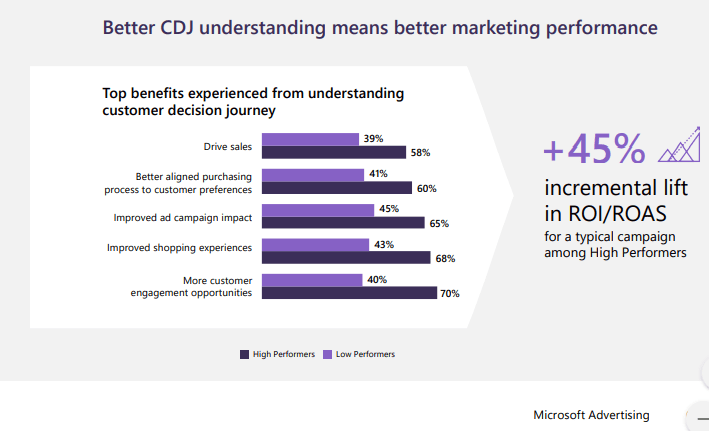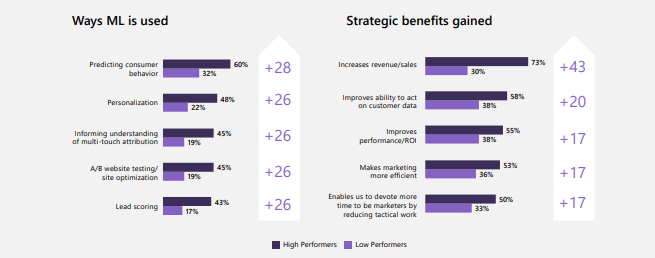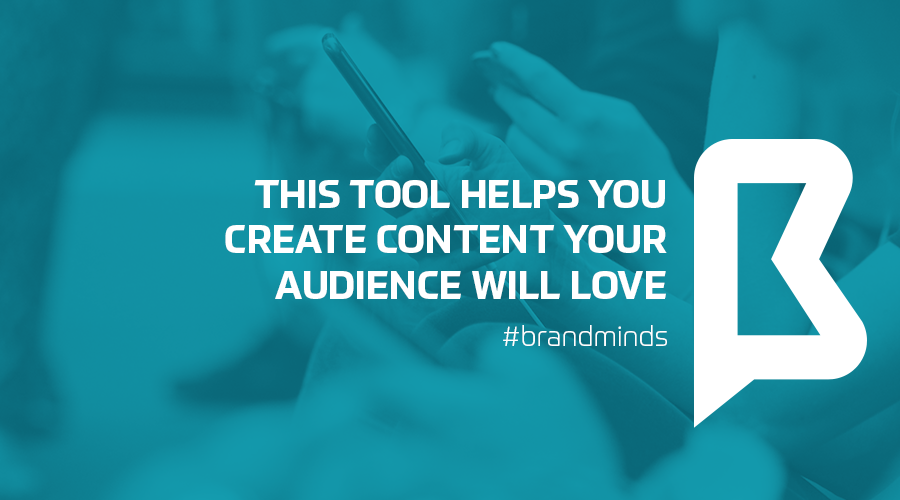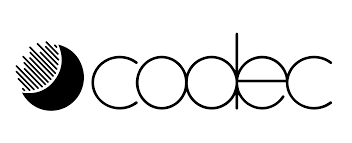12 powerful digital tools to become the best marketer
Use these 12 powerful digital tools to become the best marketer
1. KAMUA – Convert your horizontal videos into YouTube Shorts
Kamua is a browser-based tool that automates the un-fun parts of video editing. No software downloads, no file synching, no editing experience.
The team at KAMUA argues their tool is the fastest way to cut, resize and caption videos.
User benefits:
- Fully browser based;
- You work 50-90% faster;
- No previous experience required;
- Captions & Subtitles in 60 languages;
- Ultra fast cloud computing;
- A.I. automation of hard boring tasks.
2. NOTION – Complete your tasks faster to focus on creative projects
Are you looking to cut down on interruptions and stay more focused on your priorities? Check out Notion!
Notion is a new tool that blends your everyday work apps into one. It’s the all-in-one workspace for you and your team where you can customize your workflow.
Notion solves problems unique to every function from product, engineering and design to HR, sales and marketing.
3. RANK MATH – Improve your blog’s keyword ranking in Google
Rank Math is a Search Engine Optimization plugin for WordPress that brands itself as the Swiss army knife of SEO.
Just like the famous multi-purpose red tool, Rank Math provides users with a wide range of SEO focused features.
Main Rank Math benefits:
- Measure and track SEO rankings;
- Built-in advanced SEO analytics module;
- See the keywords which your website ranks for;
- Keep track of your website’s rankings;
- Check the search trends for keywords and even compare them.
4. UNSPLASH – Boost your organic reach with top quality photos
Every marketer knows that beautiful images are essential on social media.
They enhance the message and provide users with a reason to stop scrolling the feed.
Choosing the right visuals is especially important when creating advertising campaigns. Your campaign image must be impactful to boost the organic reach of your ads.
5. TAILWIND – Get discovered on Instagram with the right mix of hashtags
Tailwind is a social media scheduling tool that provides users with design, scheduling and analytics tools. This platform is particularly useful for marketers who focus their work on Instagram and Pinterest.
Tailwind acts as an Instagram Assistant which transforms your photos into hundreds of optimized, personalized designs for Instagram, Facebook and Pinterest.
Through its Hashtag Finder feature, Tailwind helps users get discovered by the right followers.
As for Pinterest, Tailwind users can create a scroll stopping Pin in less than 2 minutes.
Here’s one piece of statistics that will pique the interest of every marketer: on average, Tailwind members get 1.8x more likes on Instagram & 6.9x more Repins on Pinterest.
6. CANVA – Design email headers your subscribers will love
Canva is a graphic design platform, used to create social media graphics, presentations, posters, documents and other visual content.
This tool was created with non-designers in mind and its templates allow for anyone to design beautiful imagery.
Canva’s latest features include video messages, curved text, content planner, text effects and animated stickers.
7. MINDMASTER – Win the pitch with a visual design of your ideas
MindMaster is a full-featured collaborative mind mapping and brainstorming tool.
Marketers can use MindMaster to explore ideas and communicate information.
With MindMaster’s built-in presentation feature, you can turn mind maps into beautiful, dynamic slideshows in seconds.
Once the presentation is done, you can export the slides as an editable PPT or PDF file.
8. ARTLIST – Boost your ads conversion rate with powerful music
Artlist is a go-to library of high-quality royalty-free music and sound effects created by inspiring indie artists.
Music is an integral part of storytelling. It adds to the overall emotional outline of the content.
9. THE SCALE LAB – 10x your email reply rate
The Scale Lab is a B2B lead generation tool and a great resource for marketers looking to improve their copywriting skills.
Email is the king of marketing ROI. When done correctly, email marketing has an average ROI of 42$ for every 1$ spent.
When you use email to nurture B2B sales, the main goal of your copy is to get prospects to reply.
Here are 3 recommendations from the team at The Scale Lab about how to increase your email reply rate:
- Use the AIDA Model (grab Attention which sparks Interest which creates Desire which leads to Action);
- Focus on Benefits Over Features;
- Focus on the Prospect & Personalize.
10. UNBOUNCE – Match each visitor to the landing page where they’re most likely to convert
Unbounce is one of the leading landing page platforms that helps you convert more of your visitors into leads, sales, and customers.
Smart Traffic is a new feature of Unbounce which boosts user’s conversion rates with AI-powered optimization.
The feature automagically looks at your visitors’ attributes and sends them to the variant that’s most relevant. Smart Traffic starts optimizing in as few as 50 visits.
11. TALKIA – Increase engagement on your videos with an A.I. voiceover
Talkia uses text-to-speech software to create professional voiceovers that sound like real human voices.
The main benefit of using a professional voiceover is increased engagement.
Viewers who watch the video from start to finish are more likely to convert.
But professional voiceovers are expensive. Technology is the answer for the content creators that are looking for a different solution to their needs.
Talkia uses WaveNet technology which is the closest to human speech of all the technologies on the market today.
12. SWPELY – Create a swipe file for today’s content
Swpely is a Chrome extension that reinvented content saving.
Swpely makes it easy to collect all the great content you find.
Why do you need Swpely?
Because today’s content isn’t just websites and images. Its videos, podcasts, tweets, LinkedIn posts, and more. Bookmarking isn’t enough anymore.
What is a Customer Experience (CX) Marketer?
Table of contents
- Definition of a CX (customer experience) Marketer
- What does a CX Marketer do?
- CX Marketers make data-driven marketing decisions
What is a Customer Experience (CX) Marketer?
A Customer Experience Marketer is a new kind of marketer, part creative and part data scientist says John Cosley, Director, Global Brand and Digital Marketing at Microsoft/Bing.
Customer Experience is the result of every interaction (touchpoint) a customer has with your business, online and offline, at any stage in their buyer journey.
[bctt tweet=”A customer experience marketer is part creative and part data scientist #cxmarketer #customerexperience” username=”brand_minds”]
Why is customer experience vital to your business?
In this day and age, when digital has levelled the field for any business, customer experience is a competitive differentiator.
How a customer feels about your business is critical for customer growth, retention and advocacy. Long story short – your customer’s experience with your brand could potentially make or break your business.
HubSpot CEO Brian Halligan announced last year that his company replaced the traditional sales and marketing funnel with a new model, the Customer Flywheel. He believes the secret to building a great company is to provide a customer experience 10x lighter than the competition.
Positive customer experience can lead to turning your customers into brand ambassadors thus bringing in new customers & revenue which keeps the flywheel spinning.
Learn more: Goodbye, Marketing Funnel! Hello, Customer Flywheel!
In its 2019 Global Consumer Insights Survey, PricewaterhouseCoopers recommends brands and businesses to include another metric in addition to the traditional ROI – ROX or the Return on Experience. ROX is the metric with which marketers measure the purchase experience of their consumers.
Learn more: ROX is the new ROI
What is the job of the Customer Experience Marketer’s job? What does he/she do?
The customer experience marketer’s job is to create a better experience for the customer at every touchpoint, online or offline, no matter the stage they’re at in the buying journey.
Here are some of the points your customer is interacting with and for which the customer marketer is expected to create a positive experience:
- First contact – What is the customer’s first contact with our brand? How do we want the customer to feel while interacting with our brand for the first time?
- Social media – What does the customer see on our social media? How does our social content make them feel and think? Are these reactions exactly what we want to achieve as a brand?
- In-store – How do our customers feel like in our stores? What do they smell? It’s not a coincidence that the first thing customers smell when they come into any Lidl store is the amazing aroma of delicious pastry. This is a carefully designed customer experience!
- App/Website – Are our customers interacting easily with our app or website? What’s their experience with our digital platforms? Do they get what they want on our app/website with reduced friction and increased speed?
Data is key to unlocking smarter customer journeys.
John Cosley, Director, Global Brand and Digital Marketing at Microsoft/Bing
To create successful experiences that market to the customer journey, the CX marketer has to go through this 3-step process:
- Collect, unify, and analyze 1st-party data;
- Augment their first-party data and close the gaps with 3rd-party data;
- Understand the customer journey and create a holistic view of the customer based on insights provided by data.
CX Marketers make data-driven marketing decisions
In July of 2019, Microsoft Advertising conducted research with marketers and agencies to gather insights on how marketers use data to engage with customers.
The report is called Creating smarter customer journeys: A blueprint for the successful application of data and Artificial Intelligence in improving the customer experience.
It shows that successful CX marketers have adopted a data-driven approach which allowed them to:
- Have a better understanding of the customer decision journey (CDJ);
- Make more informed decisions based on that understanding;
- Improve customer engagement as a result;
- Improve marketing strategy as a whole.
Sources of 1st and 3rd party data according to the Microsoft Advertising report
The following sources provide 1st party data:
- Organic search data
- Site analytics
- Site visitor behaviour
- Customer-relationship management (CRM)
- Call centre data
- Ad serving data
Applications of 1st party data:
- Dynamic personalized creative
- Custom BI reporting
- Journey mapping
- CRM
- email/DR marketing
- Site personalization
The following sources provide 3rd party data:
- 3rd party data providers
- Location data companies
- Market research data (eMarketer, Gartner, Nielsen, HBR, Trendwatching etc)
- Targeting segments from ad partners
- DMP data marketplace (e.g. Oracle, Adobe)
Applications of 3rd party data:
- Customer/segment targeting
- Customer behavioural insights
- Multi-dimension campaign segmentation
- Campaign planning and forecasting
CX marketers who leverage the collected data, reach an in-depth understanding of their customers and their customer decision journey usually see a +45% incremental lift in ROI/ROAS for a typical campaign.

Source: Microsoft Advertising
Here are other results and benefits:
- More opportunities for customers to engage with brands
- Campaigns that better speak to customer needs
- Improved ad campaign impact
- Improved shopping experiences
- Better aligned purchasing processes to customer preferences
- Offers aligned to customer personas
- Personalized future customer decision journeys

Source: Microsoft Advertising
Machine Learning (ML) is another great tool that CX Marketers can leverage to anticipate consumer behaviour and create smarter, more personalized advertising experiences.
Is a CX marketer part of your marketing team?
Join the Conversation
We’d love to hear what you have to say.
Get in touch with us on Facebook Group and Twitter.
Your company doesn’t have these 3 marketing positions? It’s time to change that!
Do you want to create successful marketing campaigns?
The digital environment has given rise to so many digital tools, platforms and strategies that one marketer in your company cannot do everything that is necessary to get results. There’s only so much one person can do!
That’s why the marketer position has branched out into new marketing positions in recent years. It takes a team of specialists with valuable insights to reach customers.
3 Marketing positions you need to have in your company: Email Designer, Chief Listening Officer and Demand Generation Manager.
1. Email Designer
Email is the first digital communication tool and has been used by people and businesses since the early 1970s.
But don’t make the mistake of assuming that since it’s almost fifty years old, email marketing is obsolete. Far from it!
People still want to hear from their favourite brands and that’s what email is: a direct line of communication between brands and customers.
Understanding the benefits of permission marketing could yield businesses an ROI as high as 4000%. For every $1 spent, email marketing brings in $40. If (and that’s a big IF) you use email correctly. That’s where the email designer comes in.

What is an email designer?
An email designer is a designer who specializes in designing emails for brands and businesses with the purpose of helping them meet their business targets.
The email designer is required to have coding skills, user experience design knowledge and an eye for beautiful imagery.
What does an email designer do?
The email designer’s job is to create a branded email template from zero or optimize third-party email templates with the goal of bringing in results: sales, brand awareness, in-store foot-traffic, leads, website traffic, event subscriptions etc.
The email designer works closely with the email marketer who provides them with the content and makes sure the result is on-brand.
Designing for email is about getting to the point and making the most of the brief chance you have with your subscribers. You only get one shot, so it’s worth employing as many tricks in the book as possible to make sure your message gets through. The underlying principles are all about respecting your readers by giving them something valuable in return for their time which is, after all, the reason they signed up to hear from you in the first place.
Nicole Merlin, Email designer and developer
2. Chief Listening Officer
It used to be that your customers listened to what you had to say on TV ads, outdoor banners and newspaper advertorials.
In this digital age, they are still listening to your messages but they are also talking about your brand, your products and your culture. Your customers are talking about you on social media, personal blogs and forums.
Learn more: 7 ways you can grow your business with social media listening tools
Are you listening to what they’re saying?
If you are not, you are missing opportunities for business growth, customer engagement and brand development.
There are many social listening tools that marketers can use, but the scope of this activity has increased so much in recent years that it generated demand for a standalone position: the Chief Listening Officer.

What is a Chief Listening Officer?
A Chief Listening Officer is a social media specialist who takes an overall approach to social.
The position is a step above social media manager and it is fairly new to the digital community.
What does the Chief Listening Officer do?
The Chief Listening Officer monitors the conversations which involve the brand or product.
The specialist listens with the purpose of getting a better understanding of what customers like or dislike about the brand or product and the overall sentiment around subjects relevant to the brand.
How are customers feeling about the brand: mostly positive, mostly negative or neutral?
What are their opinions?
What are they complaining about?
According to Brandwatch, 96% of the people that discuss brands online do not follow those brands’ owned profiles so monitoring the conversations around your brand is not an easy task.
The job of the Chief Listening Officer doesn’t stop at listening. He or she is expected to create strategies to influence and change the negative opinions into positive opinions or maintain the positive outlook that customers have on the brand.
Through social listening, the Chief Listening Officer gains valuable insights which they can transform into new product ideas, tips for product development and overall business growth.
With people being more willing to share opinions and ideas across social media, this job plays a big role in forward-thinking to stay ahead of the competition and keeping customers happy with your company.
Nicole Martin, owner of NR Digital Consulting and host of Talk Digital To Me Podcast
3. Demand Generation Manager
Demand generation refers to any activity that drives awareness and interest in your product or service with the ultimate goal to create a predictable pipeline that will grow your business.
Demand generation strategy includes creating demand for sales but is not limited by it.
Demand generation is about being at the right place in the right moment providing the right content to your customers. The content you share must be a perfect fit for your ideal customers’ needs.

What is a Demand Generation Manager?
A demand generation manager is a revenue-centric marketer with seasoned skills in inbound and outbound marketing.
What does the Demand Generation Manager do?
The demand generation manager develops, maintains and executes demand generation plans aligned with business goals.
They have a deep understanding of the buyer’s journey, ensuring that content reaches the right part of the sales funnel at the right time. They also collaborate with sales and marketing to build programs that support sales enablement.
The Demand Generation Manager helps your brand reach new markets, promote new product features and build consumer buzz.
Has your company established positions for Email Designer, Chief Listening Officer or Demand Generation Manager?
Share your answer in the comments!
Join the Conversation
We’d love to hear what you have to say.
Get in touch with us on Facebook Group and Twitter.
How To Market To Women Customers
As a marketer, your job is to find the best way to connect with your customers.
Are you marketing to women customers?
Find 4 recommendations in the video below:
Join the Conversation
We’d love to hear what you have to say.
Get in touch with us on Facebook Group and Twitter.
This Tool Helps you Create Content your Audience Will Love
Just as you cannot drive your car blindfolded, you cannot design your marketing strategy without thorough knowledge of your audience. How can you write content if you don’t know whom you’re writing for? The more details you know about your audience, the better you can craft your content and the more efficient your content strategy will be.

Are you a marketer or brand manager looking to update your audience profile?
Do you seek ways to increase engagement on your content?
This tool can help you.

We started Codec to empower marketers and creatives with the empirical evidence they need to make better decisions and we are proud to have worked with some of the best in the business since founding Codec in early 2015.
Codec team
Codec is a product developed by a team of marketers, technologists and data scientists whose purpose is “helping creatives and brands make great content with confidence”.
What is Codec?
Codec is an AI powered cultural segmentation platform and consumer insight tool that allows brands to discover, interrogate and activate new audiences.
Here is how marketers can benefit from using Codec:
- Identify and understand existing target audiences and personas;
- Derisk creative and strategic decisions;
- Increase content performance.
How does CODEC work?
CODEC works as a process, by going through three stages:
1. Select your audience – you can choose from your existing personas/communities, your existing social handles or you can choose from over 1500 Codec pre-built audiences;
2. The platform proceeds with gathering the data and extracting the insights using sophisticated AI and machine learning, from natural language processing to neural nets;
3. Use the insights to inform creative decisions in any stage of the content creation process, be it research, strategy, creative, or distribution.
What kind of insights does Codec provide marketers with?
Psychographics are stronger than demographics
Demographics are no longer enough to get a complete profile of your target audience. Your audience is defined beyond standard criteria such as age, location, sex etc.; behaviours are shaped and triggered by how strongly your audience feels and resonates with a certain subject or interest.
Codec helps marketers discover these interests by providing them with psychographics so they can understand their audience in a deeper and more relevant way.
Here are 8 key insights and data that Codec provides:
1. Passion Point & Interest Analysis
This module analyses the level of engagement that the audience has with any particular interest. Codec tracks over 1,500 cultural interests across multiple European, South American, North American and Asian countries and territories to understand the interests that truly resonate with a target audience. The platform monitors in real time billions of content interactions from millions of users across social media, categorised into our 1500 interests. Marketers receive detailed analysis of their target audience’s passion points from their interactions with 3rd party content.
Benefit: Marketers are provided with actionable & shareable content strategy and enhanced content briefs.
2. Interests over time
As we grow older, our passions change: we lose interest in some of them and we discover other interests or beliefs that we feel strongly about.
Codec’s AI understands the 3rd party content that your audience interacts with and can track how the audience’s interests are changing over time.
Benefit: With the help of this tool, marketers can catch a rising trend or create evergreen content based on stable interests confirmed over time.
3. Personality analysis
Codec goes even further than identifying interests; it understands the core values and personality traits within a tribe or audience. It outlines core personality types by mapping their written text and content preferences.
Benefit: marketers can ensure the content includes the right tone, which dramatically increases shareability, affinity and purchase intent.
4. Optimal platform and format
There are so many formats you can deliver your content in: text, photographs, videos, infographics, epapers, podcasts etc. Which of these formats does your audience prefer and engage with? It can take a lot of time to pinpoint your audience’s preferred content format. Once you established the right format for your content, which platforms do you use to deliver it?
Codec provides marketers with knowledge of the formats and platforms that resonate with their audience so they don’t have to A/B test.
Benefit: This tool helps marketers make precise tactical content decisions to maximise the effectiveness of content through smart distribution.
5. Visual imagery analysis
A picture is worth a thousand words, but the right picture is worth an increase in brand awareness through engagement. Through deep learning and neural nets over millions of types of image, Codec sees the visual imagery and elements that most engage your target audience.
Benefit: Marketers can understand what genres of image content works best. Identify the framing, colour, tones and topics that are in-demand from their target audience.
6. Trending content
Delivering the content your audience is looking for at the moment they need it is a recipe for success. Google calls these moments micro-moments.
Codec identifies the recent, real-time content that is trending among your target audiences.
Benefit: Marketers can pinpoint the specific content that their target audience is spending time consuming.
7. Media planning reports
Nobody likes talking in an empty room and this tool helps you avoid it. Codec tracks exactly where your target audiences spend time online so you can target them effectively, increasing ROI.
Benefit: Marketers can customise entities they do or do not want to target against in order to protect their brand and increase effectiveness of targeting.
7. Influencers
Influencer marketing can drive engagement and increase brand awareness when done correctly. The success of an influencer marketing campaign lies mostly on choosing the right influencer.
Codec picks the most relevant and resonant influencers to use for creation and distribution.
Benefit: Marketers can identify the optimal influencers, YouTubers, bloggers, celebrities and brands that have an impact on their target audiences, and pinpoint what topics influencers would most effectively explore with their communities.
Eve, an UK on-demand mattress company doubled its sales using content developed with Codec insights:
Wrapping up
Here are the benefits of using Codec to help you create the right content for your audience:
- Better understanding of your audience by discovering the interests that truly resonate with it;
- Identifying topic pillars for the content you will create;
- Understanding the motivators for your target audience’s interests;
- Discovering evergreen content;
- No more A/B testing;
- Finding what content format and which platform to distribute it on for maximum impact with your audience;
- Which content your audience loves to engage with;
- Identifying the influencers that have the most resonance with your target audience;
- Making strategic decisions with confidence;
- Validating your choices and strategy plans.
The Main 10 Tricks Any Marketer Should Know
Working in marketing may be one of the most beautiful jobs on Earth as it keeps you always up-to-date with the new trends in the market and is a very fast paced industry. At the same time, receiving some new ideas and points of view comes handy from time to time, therefore we decided to offer you some tricks that we believe will never get old.
1.Load up on data fast. “Facebook advertising can deliver the cheapest CPM’s in online marketing with the ability to test ad efficiency in real-time. Use the power editor “duplicate” tool to create hundreds of ads and change one element per ad. Give these a small budget, and you’ll quickly see what works and what doesn’t without breaking the bank. Double down on the ones that work, and kill the ones that don’t.” – Kyle Ivins, co-founder Envolve Agency for Entrepreneur.com
2.Reduce your subject lines to only one word and get an immediate lift in email marketing. Make sure that you choose that word carefully, as it should create curiosity, while at the same time remain relevant to your message.
3.Watch your competitors’ mentions. You can start by creating a Google Alert for your competitors’ brand names (the ones that you admire,of course). This way you will find out where they are being mentioned and in what context. When you will find an opportunity to be mentioned alongside them, on a subject that fits your business good and /or you have a great angle to approach and present, you should take advantage of it and try and appear in the same context. It’s important to know that journalists might be open to include your point of view.
4.Use Google Trends that recently added new features and simplified its navigation, in order to make it easier to explore data based stories.
5.Promote your content through a .com domain as often as possible. 84% of top-ranking pages use .com as their top-level domain.
6.Live stream as much as possible. This represents an easy way to attract visitors towards your channel, to introduce the customers to your team members, show live events of your company that can project you a real living brand for the customers.
7.Guest blog on popular industry sites and put a link back to your site within your byline or bio. This builds traffic as well as personal brand authority.
8.Re-invent the “old” content in such a manner that will bring something fresh to users who may not have seen it.
9.Use decoy pricing. This is a tactic that boosts sales of high-profit items by creating another version of the product solely to make the pricier versions seem economical by comparison.
10.Endorsed relationships. This is one of the most powerful marketing tools on the planet. They open doors, build trust and create opportunities. And that pretty fast and easy. All you have to do is find the right persons to take beside you and make sure you add this valuable business asset to your marketing mix.

